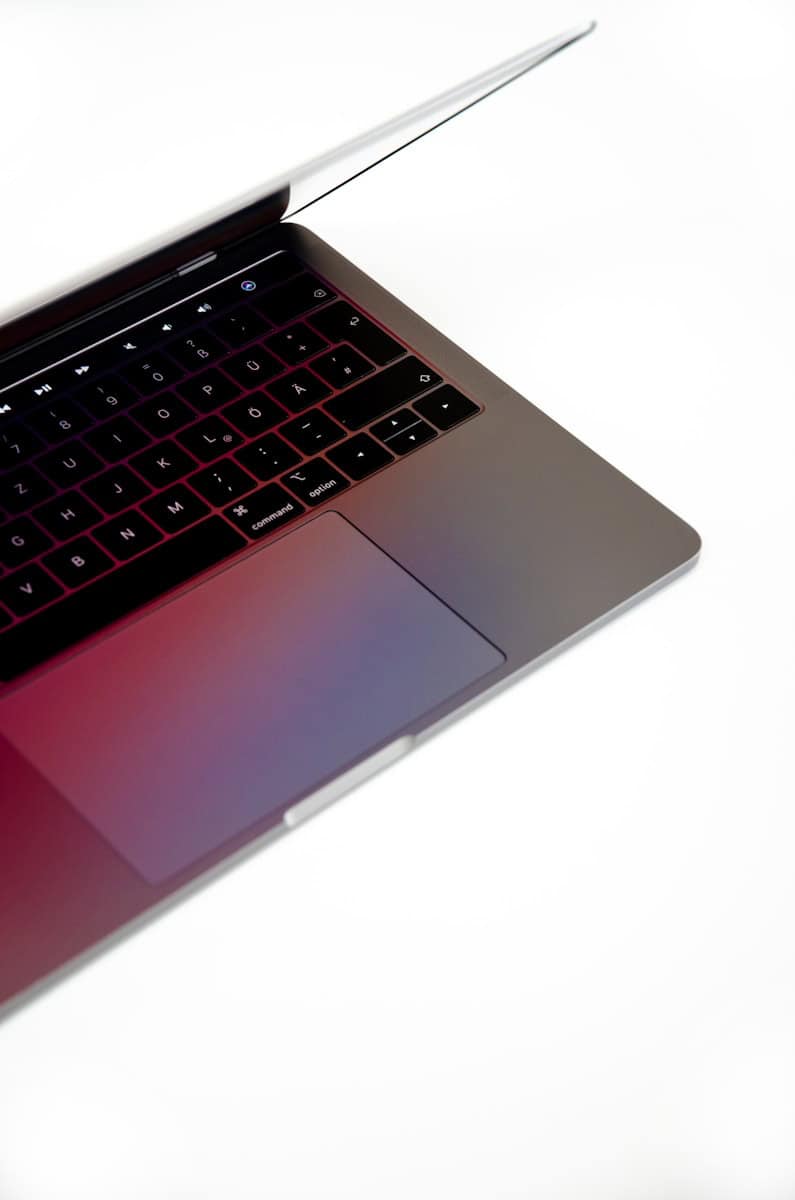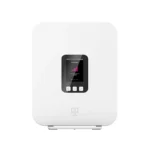Experiencing a touchpad that refuses to work can interrupt your laptop use, but there are ways to solve this issue swiftly. Often, the problem with an unresponsive touchpad lies with the software, such as drivers that need an update or a system that requires a reboot. Before looking for hardware fixes, which can be more complex, it’s worth exploring these simpler software solutions.
Rebooting your laptop is a good starting point as this can resolve issues caused by glitches in the system’s operation. If a restart doesn’t help, checking the touchpad settings in the Mouse Properties is the next step to confirm whether the touchpad is enabled. Additionally, updating or reinstalling touchpad drivers via the Device Manager can restore touchpad functionality if the current drivers are faulty or outdated.

Troubleshooting Your Laptop Touchpad
A malfunctioning laptop touchpad can be a major inconvenience. Fortunately, there are often some simple solutions to try before resorting to a repair shop. Here’s a troubleshooting guide:
Restart Your Laptop
Sometimes a simple restart can fix a variety of issues, including a non-responsive touchpad. Save any open work, fully shut down your laptop, and then power it back on.
Check Touchpad Settings
Many laptops have a function key combination that toggles the touchpad on and off. Look for a key with a touchpad icon and try pressing it along with the “Fn” key on your keyboard.
You may also find more detailed touchpad settings within your system settings. To access these:
Windows:
- Click the Start button and search for “Touchpad settings”.
- Make sure the touchpad is turned on.
MacOS:
- Go to System Preferences and search for “Trackpad” or “Accessibility”.
- Ensure the touchpad is enabled.
Update or Reinstall Touchpad Drivers
Outdated or corrupt drivers can cause hardware problems. Here’s how to manage your touchpad drivers:
- Open Device Manager: Search for “Device Manager” in the Windows Start menu or press Windows key + X and select it from the menu.
- Locate Touchpad: Expand the “Mice and other pointing devices” or “Human Interface Devices” section.
- Update Driver: Right-click your touchpad device and select “Update driver.” Choose “Search automatically for drivers.”
- Reinstall Driver (if updating fails): Right-click the touchpad device and select “Uninstall device.” Restart your laptop to allow Windows to reinstall the driver.

Check for External Device Interference
An external mouse or other USB devices might be interfering with your touchpad. Try disconnecting these devices and test your touchpad again.
Clean the Touchpad
Dirt or debris can affect your touchpad’s sensitivity. Wipe it down gently with a slightly dampened microfiber cloth. Avoid harsh chemicals.
Advanced Troubleshooting
| Problem | Possible Solutions |
|---|---|
| Touchpad not detected in Device Manager | Check hardware connections (requires disassembly, consult a technician if unsure). Try the touchpad on a different operating system such as a Linux live USB. |
| Touchpad disabled in BIOS | Access your BIOS (usually by pressing F2 or Del during startup) and ensure the touchpad is enabled under input device settings. |
If all else fails, a hardware fault may be present, and you’ll likely need to contact your laptop manufacturer or seek professional repair services.
Key Takeaways
- Restarting the laptop and checking touchpad settings can resolve many issues.
- Updating or reinstalling touchpad drivers can fix non-responsive touchpads.
- If software solutions fail, hardware issues might require professional assistance.
Troubleshooting and Fixes
When a laptop touchpad stops working, the problem can stem from hardware issues to software glitches. Proceeding carefully through the troubleshooting steps saves time and effort.
Hardware Checks and Basic Solutions
Before diving into the software, check if the touchpad hardware is in order. Make sure there’s no dust or debris on the surface that might obstruct touch gestures. A quick cleanup could solve the issue. Try rebooting the laptop to reset all hardware components. If you have an external mouse, connect it to verify if the cursor responds. Sometimes, pressing the “Fn” key alongside the function key that has a touchpad icon (like “F7” or “F9”) can enable or disable the touchpad.
Software and Drivers
The right driver can make your touchpad respond well to swiping, tapping, and other gestures. Open Device Manager by searching for it in the start menu, locate “Mice and other pointing devices,” and expand the menu. Look for a “HID-compliant mouse” or “Touchpad.” Right-click it and choose “Update driver.” If the touchpad stopped after a recent update, roll back to the previous driver version. Sometimes you need to uninstall the touchpad driver and restart your laptop. This can force Windows to install a fresh driver. In the touchpad settings, adjust the cursor speed to make sure it’s set according to your preference.
Advanced Troubleshooting
If basic steps fail, it might be a software conflict or the need for a more technical fix. Booting the device in Safe Mode allows you to check if the touchpad works without third-party software conflicts. To get there, restart the laptop while holding down the shift key. Check for Windows updates as they can include updated driver software. If the problem persists, look into BIOS updates or changes by referring to the manufacturer’s guide. Remember that troubleshooting in BIOS should be done with care or under professional guidance.
Optimizing Touchpad Use
To get the best out of a laptop touchpad, one must adjust settings and understand its capabilities.
Customizing Touchpad Settings
On a Windows PC, touchpad settings offer control over how the touchpad responds. To change these settings, first open the Start menu. Then select Settings. Choose Devices and go to Touchpad. Here, users can adjust sensitivity and configure actions for multi-finger gestures. For example, they can decide how fast or slow the cursor moves or how the touchpad responds to two-finger taps.
Laptops from HP, Dell, Lenovo, and Acer often have additional settings managed through their own software. In such cases, users should search for the touchpad software installed by the laptop manufacturer. Adjustments like changing the scrolling direction or setting up custom gestures can optimize how the touchpad works.
Understanding Touchpad Features
Touchpad features have evolved, especially in Windows 10 and Windows 11. Users can take advantage of features like pinch-to-zoom and two-finger scrolling. Touchpads on modern laptops support these gestures, which can enhance productivity and ease of use.
Laptops may have function keys (F1 through F12) that toggle the touchpad on and off. This is useful when using an external mouse, either USB or Bluetooth. When a user wants to switch from a touchpad to a mouse, pressing the appropriate function key can disable the touchpad to prevent accidental touches.
Frequently Asked Questions
In this section, we address common queries about laptop touchpad issues. Detailed solutions are provided to help you resolve touchpad problems efficiently.
How can I troubleshoot a touchpad that has stopped responding?
To diagnose a non-responsive touchpad, check your laptop’s function keys first. Often, a quick press of the function key that toggles the touchpad on and off can solve the issue. If that doesn’t work, restarting the laptop might help by resetting the touchpad’s software connection.
What steps should be taken to enable a disabled laptop touchpad?
If the touchpad is disabled, you can usually turn it back on by going into the mouse settings. In Windows, search for “Touchpad” in the Start menu and look for an option to enable it. Some laptops also have a dedicated key along the top row to enable the touchpad.
Is it possible to repair a laptop touchpad that isn’t clicking?
When a touchpad won’t click, it could be a hardware failure or a software glitch. Try updating the touchpad driver in the Device Manager or check for dirt and debris that might be blocking the button mechanism.
What methods are there to reset a laptop touchpad’s settings?
To reset your touchpad settings, search for “Touchpad” in the Windows Start menu and select it. Once open, look for a “Reset” or “Default” button to revert to original settings. Alternatively, updating the driver can also reset settings to default.
How can I unfreeze a laptop touchpad that is stuck?
A stuck touchpad might be unfrozen by restarting the laptop. Another method is to press the function key that corresponds with the touchpad. This can refresh the touchpad’s connection to the system.
Are there any system settings in Windows 10 or 11 that could affect touchpad functionality?
In Windows 10 and 11, touchpad functionality can be influenced by settings under “Devices” in the main Settings menu. You can adjust sensitivity, gestures, and other features. Ensure that the touchpad is not only enabled but also set up suitably for your usage.







